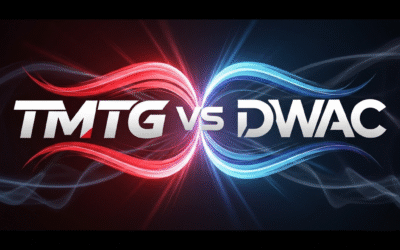public’s ‘disconnect’: 4 insights from Justice Barrett

public’s ‘disconnect’: 4 insights from Justice Barrett
Table of Contents
- 1. Understanding the Source of the Public’s ‘Disconnect’
- 2. The Media’s Role in the Great Divide
- 3. Methodology Matters: Why Legal Reasoning is Misunderstood
- 4. Bridging the Gap: A Call for Better Civic Engagement
In a recent public appearance, Supreme Court Justice Amy Coney Barrett addressed a growing concern that strikes at the heart of American democracy: the public’s ‘disconnect’ from the work and purpose of the nation’s highest court. As public approval ratings for the Supreme Court hover near historic lows, Justice Barrett’s comments provide a rare window into how the justices themselves view this widening chasm. She argues that much of the public’s frustration stems from a fundamental misunderstanding of the Court’s role.
Rather than viewing the Court as another political branch that delivers policy “wins” or “losses,” Barrett urges citizens to see it as a judicial body committed to a specific legal methodology. Her perspective offers a framework for understanding why the Court acts as it does, even when its decisions are unpopular. Here are four crucial insights drawn from her remarks on this critical disconnect.
1. Understanding the Source of the Public’s ‘Disconnect’
Justice Barrett’s primary point is that the public’s ‘disconnect’ originates from a flawed expectation. Many Americans, she suggests, view the Supreme Court through a political lens, expecting justices to vote in line with the party of the president who appointed them. When a ruling doesn’t align with their preferred political outcome, they see it as a partisan failure rather than a legal judgment.
Barrett emphasized that justices are not “junior-league politicians.” Their job, as she sees it, is to interpret the law and the Constitution as they are written, not to legislate from the bench to achieve a desired social outcome. This is a crucial distinction. While a politician’s job is to represent the will of their constituents, a judge’s duty is to remain impartial and apply legal principles consistently, regardless of public opinion.
This difference in perspective is the very engine of the disconnect. The public often judges the Court’s “success” based on policy results. The justices, on the other hand, judge their own success based on their adherence to a consistent judicial philosophy and a faithful interpretation of legal texts. Until the public understands this fundamental difference in purpose, the frustration and sense of betrayal are likely to persist.
2. The Media’s Role in the Great Divide
A second insight from Justice Barrett’s commentary points to the role of the media in fueling the public’s misunderstanding. In the fast-paced, 24-hour news cycle, complex legal decisions spanning hundreds of pages are often boiled down to a single, explosive headline. The focus is almost always on the winner and the loser, not the legal reasoning behind the outcome.
Headlines might scream about a “conservative victory” or a “liberal defeat,” reinforcing the narrative that the Court is just another political battleground. Barrett noted that reading the full majority and dissenting opinions would give citizens a much richer understanding of the legal debate at hand. “The dissents are written to persuade the majority,” she explained, highlighting that the internal dialogue of the Court is a rigorous legal exercise, not just a clash of political wills.
Unfortunately, few have the time or legal training to read these lengthy opinions. They rely on media summaries, which, by their nature, strip out the nuance. This simplification contributes directly to the public’s ‘disconnect’ by framing every decision as a partisan power play. For more on how legal language is interpreted, you can explore resources on legal interpretation theories like Textualism.
3. Methodology Matters: Why Legal Reasoning is Misunderstood
Justice Barrett is a well-known proponent of originalism and textualism, judicial philosophies that prioritize the original meaning of the Constitution and the plain text of a statute. Her third point is that the public largely misunderstands what these methodologies entail, often viewing them as a convenient mask for a conservative political agenda.
She argues the opposite is true: a consistent methodology is what constrains a judge from imposing their personal policy preferences. By tethering themselves to the text and historical context, judges are, in theory, prevented from “updating” the law to fit their own views. “My goal is to apply the law as it’s written,” Barrett has stated, “not to decide cases as I might wish they would come out.”
However, to an outsider, this can look like a cold and rigid exercise that ignores modern realities. When a textualist interpretation leads to an unpopular outcome, it’s easy for critics to claim the methodology is just a means to an end. This clash—between a judge’s focus on a consistent interpretive process and the public’s focus on a just real-world outcome—is a massive source of the public’s ‘disconnect’. It’s a debate not just about a single case, but about the very soul of American jurisprudence.
4. Bridging the Gap: A Call for Better Civic Engagement
Finally, buried within Barrett’s diagnosis of the problem is a subtle call to action. While she defends the Court’s role, she also acknowledges the importance of public legitimacy. The solution, she implies, is not for the Court to become more political, but for the public to become more judicially literate.
She encourages people to move beyond headlines and engage more deeply. This means fostering better civic education in schools, encouraging media outlets to provide more nuanced coverage, and for citizens themselves to take the initiative to understand the basics of our constitutional system. When the public understands that the Court is meant to be a check on public opinion—not a reflection of it—the institution’s decisions might be viewed in a new light.
This is not about asking the public to agree with every decision. Strong disagreement is a healthy part of democracy. However, Justice Barrett suggests that this disagreement should be rooted in an understanding of the Court’s actual function. A public that can distinguish between a legal argument and a political talking point is better equipped to hold all branches of government accountable. Bridging the public’s ‘disconnect’ is a shared responsibility, requiring a commitment from the judiciary, the media, and the American people.
Conclusion: An Invitation to a Deeper Conversation
Justice Amy Coney Barrett’s insights reveal that the public’s ‘disconnect’ with the Supreme Court is not just about unpopular decisions; it’s about a fundamental divergence in how the institution’s role is perceived. By highlighting the differences between political and judicial functions, the influence of media framing, the misunderstanding of legal methodology, and the need for civic education, she invites a more substantive conversation. Whether one agrees with her jurisprudence or not, her analysis provides a critical framework for understanding one of the most pressing challenges to the legitimacy of the American judiciary today.









